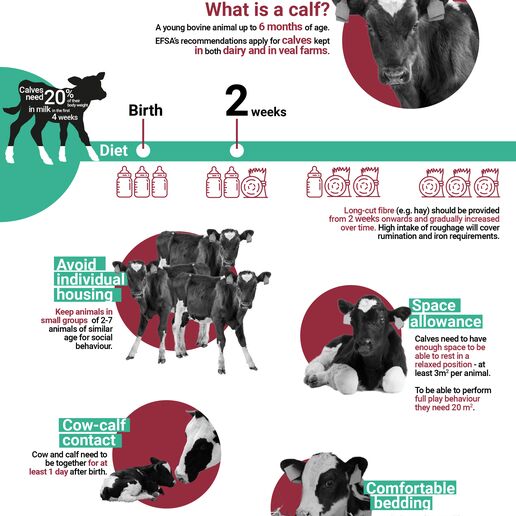Welfare of calves on farm


To improve the welfare of farmed calves, the animals should be kept in small groups with sufficient space to rest and given deformable bedding, while the use of individual pens should be avoided. These are some of the findings of the latest scientific advice from the European Food Safety Authority (EFSA). Our assessments on the welfare of farmed animals provide support for the revision of the legislation on animal welfare in the European Union.
What is a calf?
A young bovine animal up to 6 months of age. EFSA’s recommendations apply for calves kept in both dairy and in veal farms.
Calves need 20% of their body weight in milk in the first 4 weeks.
Long-cut fibre (e.g. hay) should be provided from 2 weeks onwards and gradually increased over time. High intake of roughage will cover rumination and iron requirements.
Avoid individual housing
Keep animals in small groups of 2-7 animals of similar age for social behaviour.
Space allowance
Calves need to have enough space to be able to rest in a relaxed position - at least 3m2 per animal.
To be able to perform full play behaviour they need 20 m2.
Cow-calf contact
Cow and calf need to be together for at least 1 day after birth.
Comfortable bedding
For their comfort provide a deformable bedding.
Good animal welfare practices not only promote intrinsic animal wellbeing but also help to make animals healthier. This is a key element for the safety of the food chain considering the close links between animal welfare, animal health and foodborne diseases, in line with the principles of One Health.